Helping customers stay charged on the road by offering a simple charging solution for their electric vehicle ownership
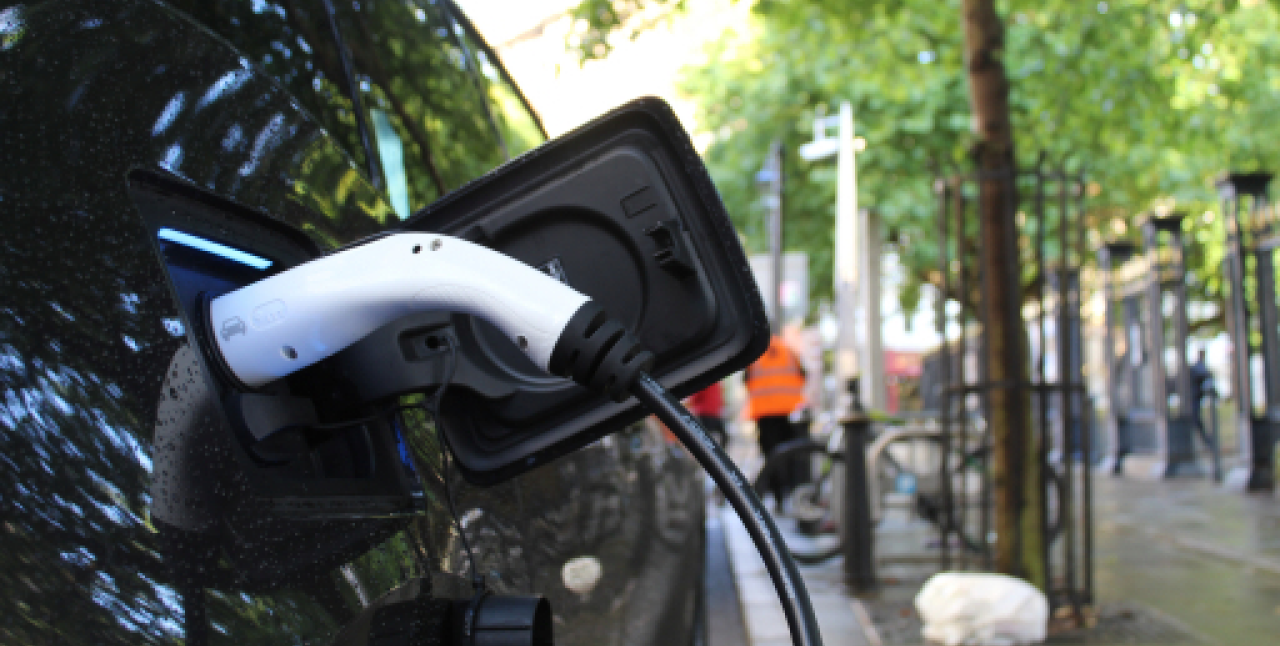
Photo by Andrew Roberts on Unsplash
Discovery
User needs
Through previous user research with customers about purchasing electric vehicles, we had already identified many user needs. One of the biggest barriers to buying an electric vehicle was not feeling confident about getting around without losing charge and then also not knowing where to go to to charge their car, also known as range anxiety. Another barrier was around unfamiliar costs and processes, especially regarding charging and running costs.
Customers were familiar with their petrol and diesel vehicles. They knew where to go to fill up with fuel, how much it would cost, how long it will roughly take and that they didn't need to sit and wait until the car had enough fuel to get them from A to B. Customers also had confidence that the pumps work and will have the fuel they need and if not, there will often be another garage nearby. With the electric vehicle charging infrastructure not as developed, charge points are not located as vastly as fuel garages. To add to this there could be a chance charge points aren't always working and the costs can vary greatly, bringing a lot of anxiety to customers.
To help communicate the needs, goals and pains experience by our target audience of first time electric vehicle buyers, we built an empathy map. We took research findings and placed insights into what our users are thinking, doing, saying and what their pains and goals are. By doing this we started to build empathy and develop an understanding for what our target audience really needed.
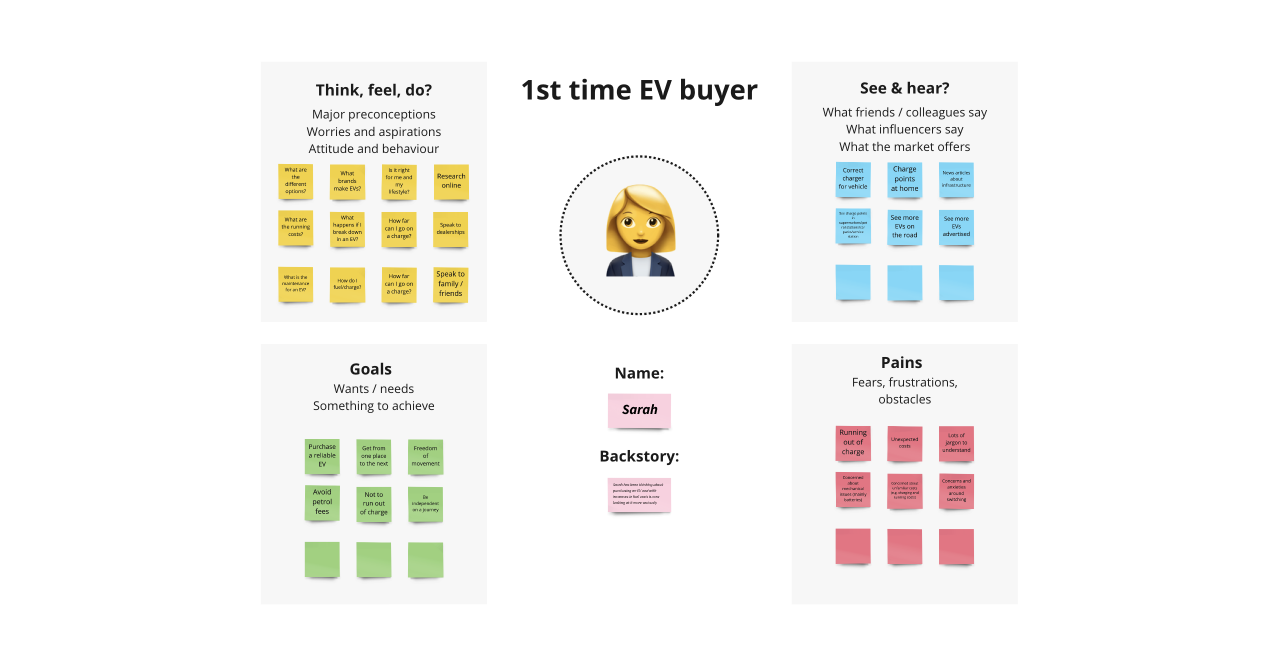
Business needs
We identified business needs through stakeholder interviews and proposition work that had already been done around electric vehicles. We discovered that the business aimed to help customers feel confident about buying an electric vehicle and encourage them to purchase their electric vehicle through cinch.
Through combining research and data, we had also identified that customers who had bought electric vehicles through cinch had already purchased an electric vehicle before and knew a lot about the ownership about these vehicles. Many customers were previously put off purchasing electric vehicles at cinch by public charging unknowns (c.30% of customers). Therefore, there was an opportunity for the business to attract first time electric vehicle buyers to purchase their first electric vehicle from cinch.
Defining the problem to solve
Through in depth analysis of the current public charging infrastructure, the business had identified that there are around 10,000 chargers on 18 different networks, meaning lots of differences in uses and costs. This highlighted an opportunity to help customers navigate this complex infrastructure with the simple, clear proposition of a charge card and service that could be used at thousands of charging locations and 14,800 individual chargers.
This card and service would direct customers to public charging points that they could use across the UK and reduce the need to understand usage and costs of different charging points.
As this was a new product, the team decided to deliver a lean approach to learn the effectiveness of product. And we defined our hypothesis to design and test against which was: Based on research that people are anxious about purchasing an electric vehicle due to ‘range anxiety’ and not being able to charge their car when out driving, we believe that providing them access to thousands of charging locations and 14,800 individual chargers to people who are considering purchasing an electric vehicle for the first time, will cause and increase in conversion for first time buyers of electric vehicle at consideration to purchase phase.
Design
Taking the empathy map of customers, myself and another designer started to map out what an optimum end to end experience could look like for a customer purchasing an electric vehicle. We mapped what they might be doing, thinking, pains and opportunities across various stages of this experience, from considering an electric vehicle to owning an electric vehicle and charging on the go.
This helped us to see what needs a customer would have and what information they would need at various stages. This also enabled us to see how our part of the service would fit within the customers whole experience of buying an electric vehicle, allowing us to meet unmet needs and help customers more effectively.
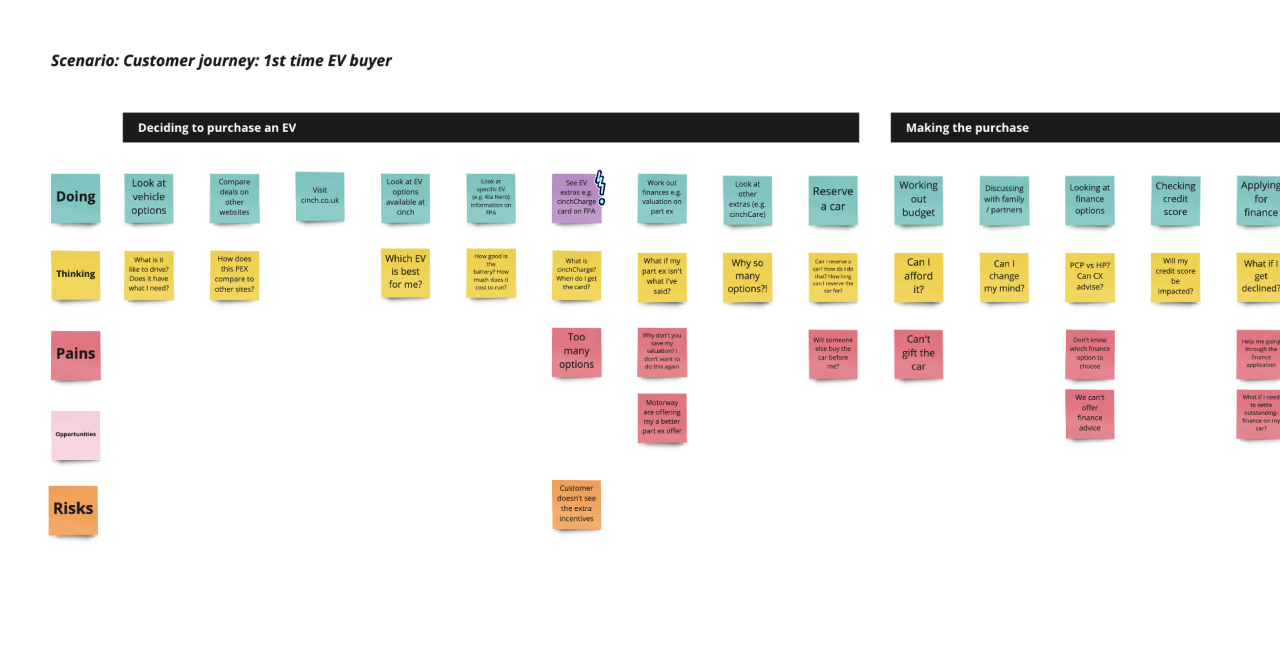
Once we had collaborated on this, we invited the whole team to review and build in more considerations. With insight from marketing, operation teams and engineers, we were able to get extra context and agree on what our customer journey would look like.
We started to use this map to help integrate the service that had already been approved by the business that surrounded the charge card product. For example, when thinking about a customers goal of getting from A to B as easy as possible, much in the same way they would with a petrol or diesel car, we started to think of features that would be useful for the service, including route planning and clearly seeing the cost to charge to a certain percentage that will ensure they make it to their destination.
By understanding the needs of a customer using the product and service, this also helped us feedback on content and user interface that wasn’t intuitive to understand surrounding the charge card product (provided by a third party). For first time electric vehicle buyers, this was key to get right to meet our customer needs and business needs of empowering customers with their electric vehicle, not overloading them with complex jargon.
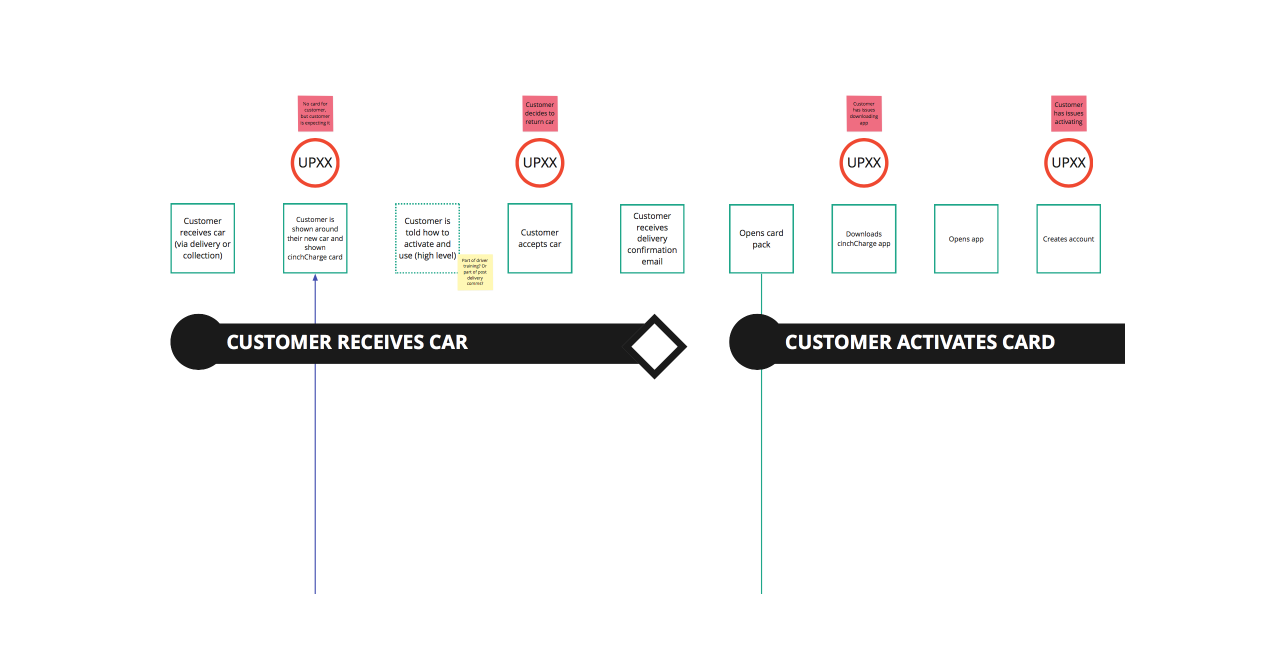
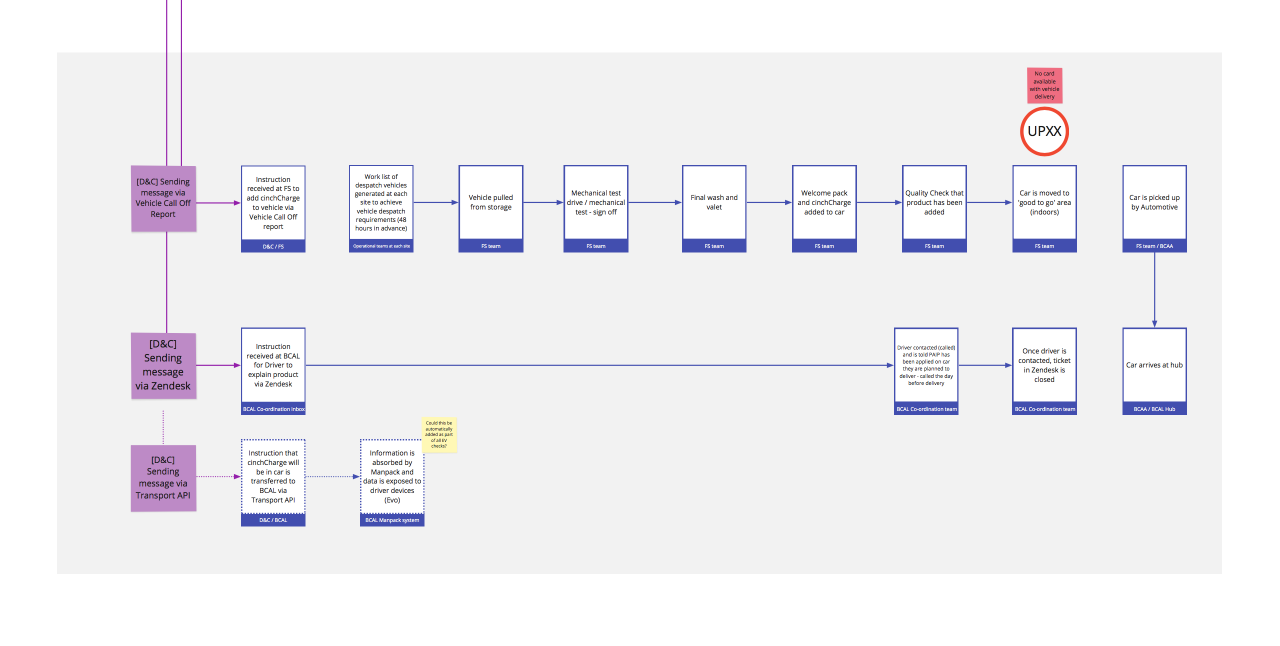
The next steps would have been to mock up this experience and test it with customers to validate our assumptions of information, context and the whole end to end experience, however with a tight deadline and the knowledge that this would be going out as a trial first anyway, we skipped this and I started to design the service that would be needed to deliver this customer experience.
Having the assumed optimum customer journey mapped out, I started to add all the various teams and processes that would need to be involved to deliver this to customers. From prep centres, to drivers delivering cars, to third parties involved, I started to piece together an idea of how the service could operate. I then ran these processes with the various teams involved (e.g. prep centres, drivers) to get feedback.
Through these sessions I gained more understanding of their current processes and how we could utilise those instead of creating new processes from scratch. By mapping all processes on one map, I could also communicate to other teams the impact of their process on other teams, for example if one team didn’t do something, it would be on the next team to have to pick up etc.
After every session I would go back and update maps. Through this I could also review and make sure all processes were ensuring minimal risk and cost to the business. By having the end to end customer experience, it became increasingly clear that although the core of cinch’s journey was defined, the actual usage of the product (provided by a third party) was not. For example, if a customer had an issue with the charge card, we needed to understand how we could resolve for customers through the third party which we currently hadn't explored. I flagged this as a risk and something that we would need to collaborate with the third party to ensure the same level of customer experience was achieved throughout.
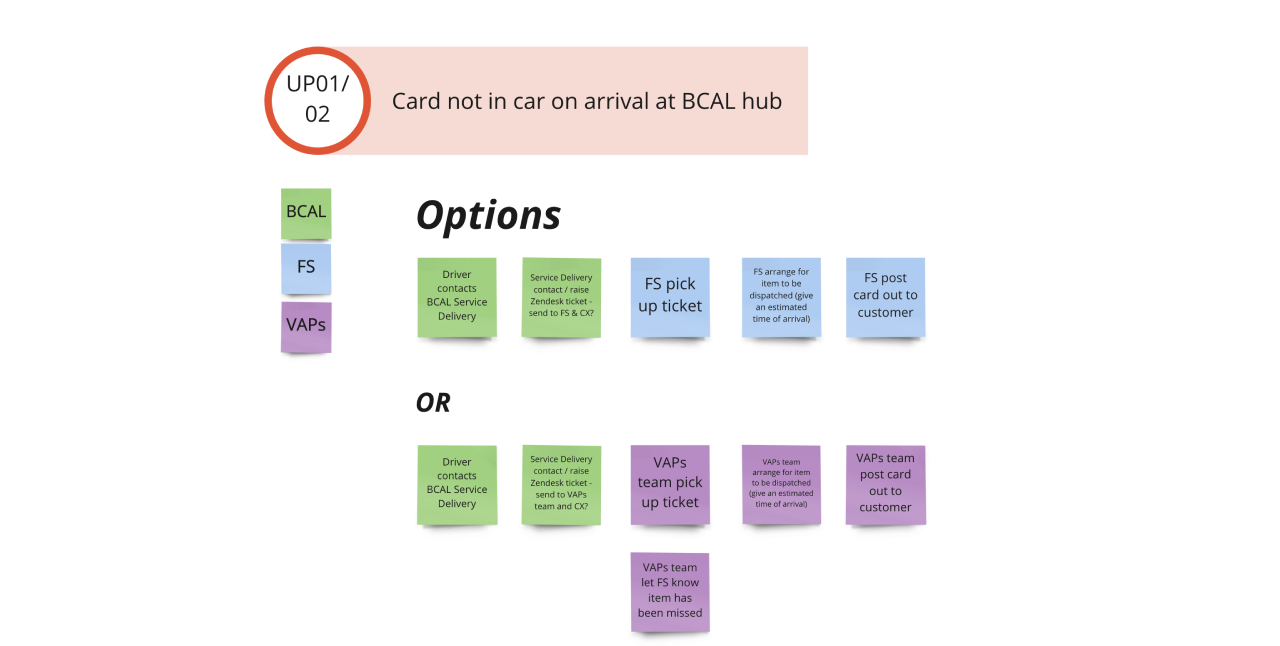
Delivery
From piecing all the processes together to form the working service blueprint, I conducted multiple walkthroughs to talk through how we could start to deliver the service. The service blueprint was used in all meetings to facilitate conversations, plug gaps and help define what teams would need to collaborate.
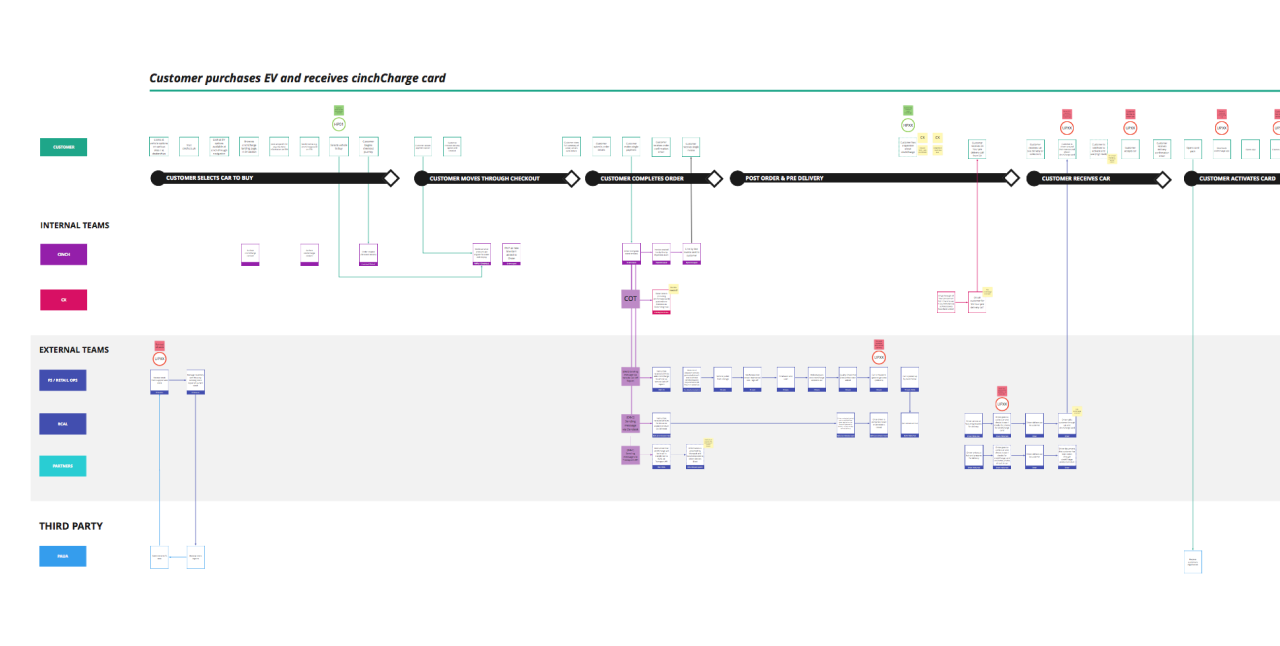
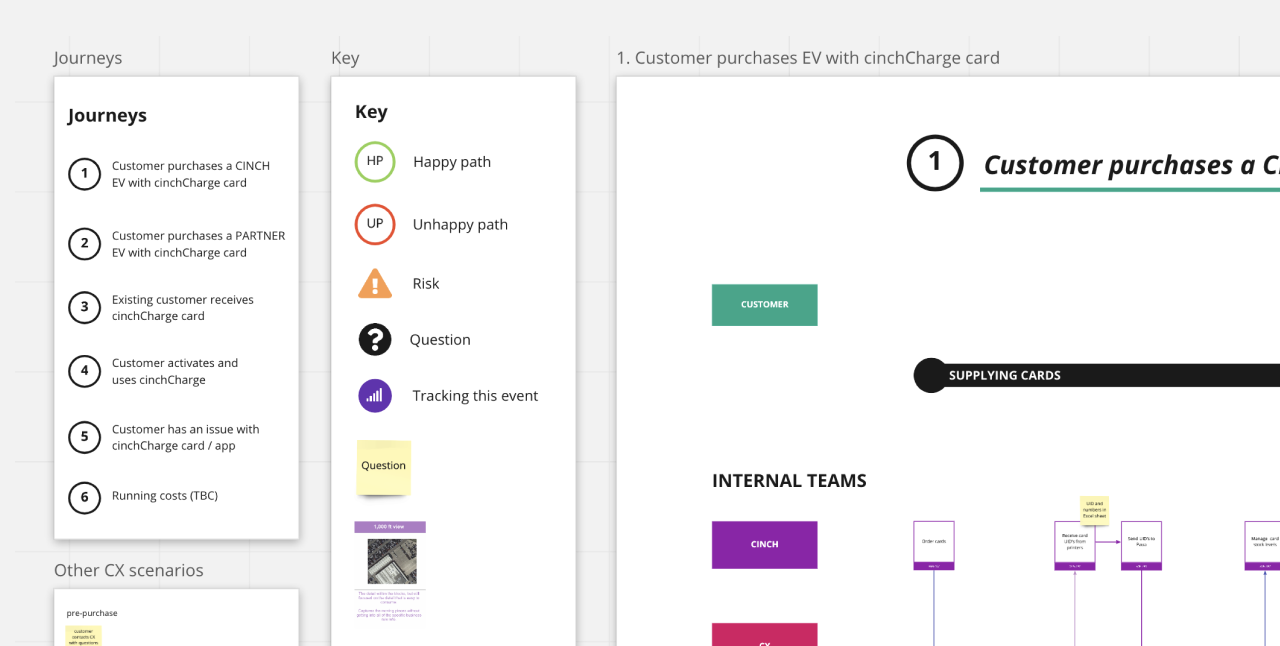
Once we had defined the core end to end experience, I started to build out more scenarios including both happy and unhappy paths. I mapped the various scenarios onto the core service blueprint and linked this to a scenarios table and raid log. We used both documents to run through with various teams and stakeholders to collaborate on solutions whilst in delivery.
By having the document we could work through all possible scenarios and by having the map, we could see holistically of how the scenario might impact the customer and business.
Outcomes
This work enabled the business to understand more about how to help customers feel more confident about purchasing an electric vehicle for the first time by removing anxieties around charging on the go.
Through mapping the end to end service, I was also able to help the business highlight key areas in a customer journey where customers needed information, guidance and where a new product (a charge card) would be best integrated into their electric vehicle ownership experience. I was also able to ensure the best customer experience could be delivered by streamlining and aligning backstage business processes.
Without the view of the whole experience, there was a risk that operations would have been missed and left for the third party to handle, which had happened with a product before, leading to poor customer experience and huge amounts of support time and money spent resolving issues.